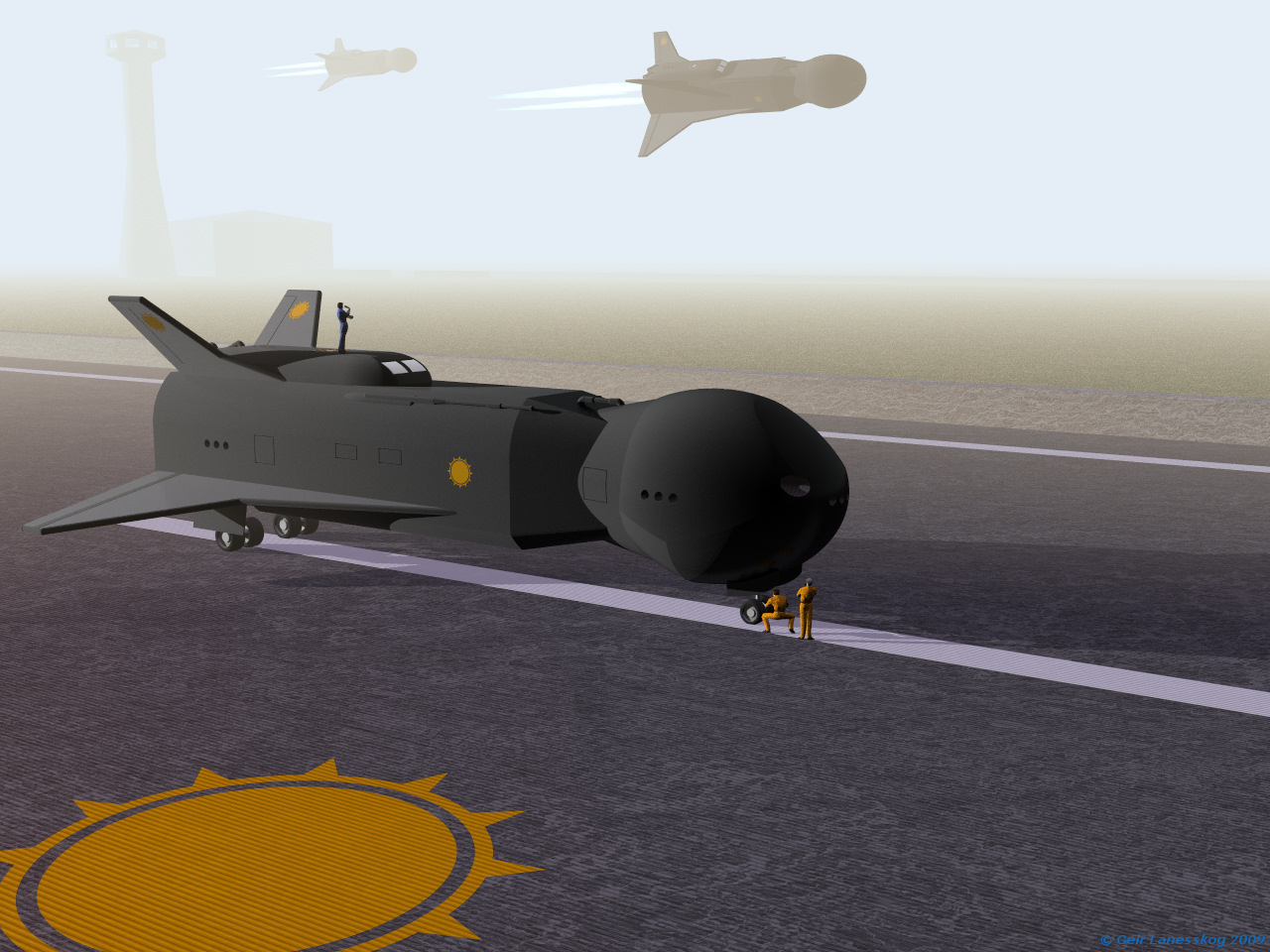
 |
|||||||
|
|
|
|
|
|
|

Samurai on the Tarmac
Rising from the ashes of the canceled H5 program, The Eastern Alliance S-1 "Samurai" was touted as the first true space fighter, though airbreathers with orbital capability predated it by a decade. But the Samurai was not a fighter that could reach space, but a space fighter with atmospheric capability.
The design was a series of compromises at the edge of technological capability. Propaganda files showed the S-1 in vertical takeoffs and landings, flying to space and beyond the moon.
The truth was more complicated. Fully loaded with 100 tons of liquid argon fuel, the S-1 lacked the thruster power to hover. Even worse, the landing gear where rated to 150 tons, while a fully loaded S-1 massed nearly 190. The S-1 did have enough delta-V to barely make orbit from a runway launch, but not from sea level, and not when fully outfitted. Instead, most S1s left Earth attached to a harness below an Antonov transport or were refueled in flight before launching towards orbit. Once in orbit, it rarely returned; refueled from orbital depots, the S-1s patrolled orbits from the Earth to the Moon and beyond.
To power the argon plasma engines, the S-1 utilized a Mitsubishi RX-4 Pebble reactor capable of 218MWe sustained and over 9GWe propulsion burst output. Even at maximum output and thrust, the plasma drive system could produce only 183 tons thrust, leaving a fully loaded S-1 unable to sustain one gee acceleration. This was not technically a limitation in terrestrial flight, as flight surfaces provided lift and allowed a powered assent into orbit. In practice, however, the thrust numbers were vacuum values, and the plasma engines performed poorly below 10,000 meters altitude, another reason for Antonov-assisted launches. Even worse, in vacuum, the heat generated by the max burst mode reactor overwhelmed radiator systems, causing the radiator-encrusted wings to glow cherry red and melting the rear landing gear wheels.
To lower mass, the S-1 skimped on radiation shielding. Had the RX-4 been installed in a commercial facility, the shielding alone would have outmassed a loaded S-1. The bulk of the shielding was located between the reactor and the crew section, but even so, the power to burn a full propellant load would leave the crew irradiated by 11 rems, much more than most permissive military allowances.
Despite these shortcomings, the Samurai performed well in the Last World War. The 23 vehicles were a an unparalleled force, devastating the near earth and Lunar environment with Mark 1 space torpedoes and 50mm rocket shells. Only the S-1's thin 10mm nanocarbon fiber composite armor prevented the vessels from maintaining space supremacy.
In the last months of the war, many of the Samurai's shortcomings were addressed by the S-1A, a vehicle the sported a more efficient reactor, additional thrusters and better armor. Of course, these improvements came at the cost of a further reduction in radiation shielding.
Crew: 2 (4 max)
Length: 27.2 m
Wingspan: 16.8 m
Height: 9.4 m
Dry mass: 69.98 mt
Loaded mass: 78.59 mt
Wet mass: 188.59 mt
Powerplant: Mitsubishi RX-4 (218.4MWe gen / 9.1GWe max, 70% thermal efficiency)
Plasma Engine: 1 X K16, 1 X K8, 4 X N15 argon plasma thrusters
Max thrust (1000isp @ max output): 1,797.6kN (183.24 mtt) for 8.578kps delta-V (13 minutes)
Max performance (5000isp @ gen thrust): 10.15kN (1.035 mtt) for 42.891kps delta-V (200 hours)
Reaction thrusters: 36 X 15mtt E147 tetranitrogen rockets
Armament:
2 X 580mm torpedo missile tubes, 6 X MSP-1"Mark 1 Space Torpedoes" (11.46kps)
2 X 50mm rocket gun, 600 X 50X350mm SK-10 rocket rounds (3.55kps)
Armor: 10mm NCF composite, 20mm NCF crew cabin
-- Combat Spacecraft of the Last World War, Lassiter Press, 2065
All pages and images ©1999 - 2010
by Geir Lanesskog, All Rights Reserved
Usage Policy
![]()